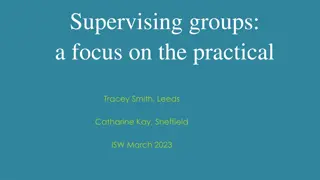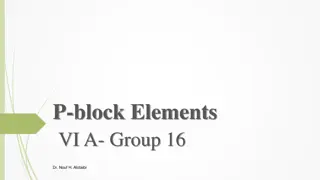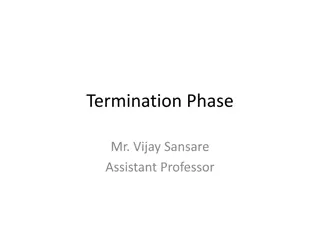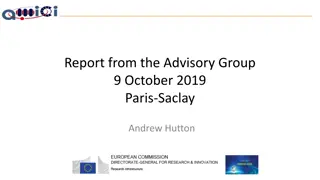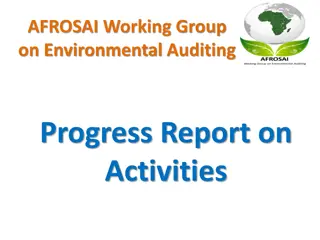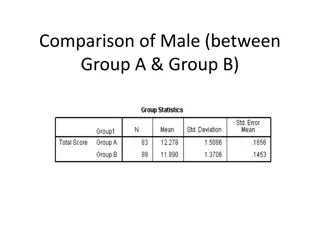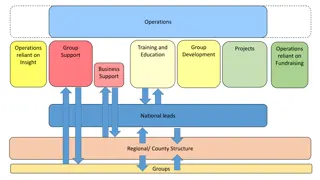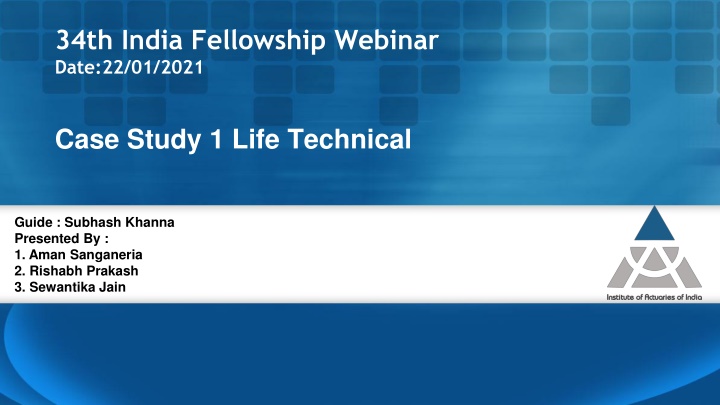
Implications and Strategies in Life Insurance Pricing
Explore the implications of reinsurance rate increases on a life insurance company in India, discussing market ranking, profitability, regulations, reserving, and capital requirements. Discover potential alternatives and considerations in this challenging scenario.
Download Presentation

Please find below an Image/Link to download the presentation.
The content on the website is provided AS IS for your information and personal use only. It may not be sold, licensed, or shared on other websites without obtaining consent from the author. If you encounter any issues during the download, it is possible that the publisher has removed the file from their server.
You are allowed to download the files provided on this website for personal or commercial use, subject to the condition that they are used lawfully. All files are the property of their respective owners.
The content on the website is provided AS IS for your information and personal use only. It may not be sold, licensed, or shared on other websites without obtaining consent from the author.
E N D
Presentation Transcript
34th India Fellowship Webinar Date:22/01/2021 Case Study 1 Life Technical Guide : Subhash Khanna Presented By : 1. Aman Sanganeria 2. Rishabh Prakash 3. Sewantika Jain
Introduction www.actuariesindia.org
Case Study 1 Life Technical (Group 1) You are the pricing actuary in a life insurance company in India Your company has been successfully selling protection (pure term insurance) business at attractive premium rates for a number of years and is now the market leader in this segment In this journey, your reinsurer has also been very supportive, by providing underwriting expertise, reinsurance administration tool, claims management support, and offering competitive reinsurance terms Recently, your reinsurer has revised the reinsurance premium rates upwards by around 40%-45% (at different ages) for future new business You have also re-filed your term insurance product with increased premium rates but the regulator has capped the maximum increase in premium rates to 20% due to increased awareness and the COVID 19 pandemic www.actuariesindia.org
Case Study 1 Life Technical (Group 1) Discuss the possible implications of the scenario you face on: The Company s business and market ranking Profitability of future new business Experience of existing business Reserving and capital requirements Discuss the regulations applicable to term insurance business covering: Pricing / File and Use requirements Reserving and solvency requirements Reinsurance Discuss the options the Company has / the alternatives you may consider in the given scenario www.actuariesindia.org
Unknowns & Assumptions www.actuariesindia.org
Unknowns & assumptions Unknown The exact increase in premium rates following the change in reinsurance rates and the impact on profitability given the regulatory cap of 20% is not known Explanation The 40-45% increase in reinsurance rates will lead to increase in premium rates but the increase in premium rates will depend on the proportion of risk ceded and revision in pricing assumptions (if any) Assumption We have assumed that that the insurer s recalculated premium rate is significantly higher than the regulatory cap of 20% www.actuariesindia.org
Possible Implications www.actuariesindia.org
Companys Business & Market Ranking An increase in the premium rates may lead to lower new business sales if the lower premium rates was the only factor attracting potential customers In times of a pandemic, there is heightened awareness about life insurance - an increase in premium rates could lead to negative publicity Also, the customers would be more sensitive to price changes in the current scenario than otherwise However, the exact impact will depend on how revised rates offered by the company compare to those offered by the competitors The company was already offering very attractive rates and the increase in premium rates is capped at 20%, the premium rates may remain attractive compared to the premium rates offered by the competitors www.actuariesindia.org
Companys Business & Market Ranking The following are also significant factors for healthy sales: sales channels and target market; claim handling and settlement ratio; customer care procedures etc. The brand value of the company and the amount of trust that it carries with its customers will also determine the impact on the sales / market ranking and the company is the market leader in this segment Given there is no change in above factors, we expect the impact on new business sales will not be significant and the company will be able to maintain a healthy market share www.actuariesindia.org
New Business Profitability The regulatory cap of 20% on premium rates increase means lower profit margins The impact on New business sales will depend on whether the increase is across industry or only for the company New business volumes will be lower if the increase in premiums is only for the company - this would decrease the value it can generate from its New Business sales At the same time, lower sales volume will increase the per policy expenses and reduce profitability further; any increase in acquisition expenses will further impact per policy profitability If company s revised rates still does not reflect company s experience correctly (still off) then that can also lead to lower profits in future as the experience emerges www.actuariesindia.org
Experience of existing business The steep increase in the reinsurance rates may be indicative of the adverse mortality experience of the company. The higher cost of mortality compared to the pricing assumptions (used for existing business) will also lead to lower profits emerging from the existing business. The impact on lapses is more complicated it depends on whether the premium increase is only for the insurer or if it is a case in the overall market If the increase is across industry, there will be less selective withdrawals from the existing business as good lives would find it harder to get cheaper rates than the existing policy both the lapse and the mortality experience may improve If the company is the only one to increase its rates specially at a time like Covid it could lead to negative publicity and a lot of existing customers could withdraw their policies not only on term insurance but also on other products of the company As the fixed expenses are shared between all policies, a decrease in the NB sales volume due to higher price would also increase the per policy expenses for the existing business www.actuariesindia.org
Reserving and Capital Requirements Existing business Mortality Impact As company is the market leader, it would have credible data for experience study This will help it know about how the past experience has been and accordingly the valuation assumptions would be revised for reserving Considering, the scenario it may be indicative that the actual experience is worse off than what has been expected As the company revises its mortality assumptions, the company will need to hold more reserves Existing business Lapse Impact If the increase in price is across the market, existing business will have lower lapses Better persistency will lead to more business staying on the books and hence leading to an increase in the overall future reserves Looking at the term product in isolation, the reserving requirement might increase due to the pandemic and the company might have to hold extra reserves, over and above any other contingent liabilities that may be held by the company www.actuariesindia.org
Reserving and Capital Requirements However, given the reserves are not very significant Term (as compared to savings product) the impact on total company reserves may not be significant for the Company if it sells a variety of products Given that the rates are being revised in light of the adverse experience this would increase the overall capital requirement for the product Term products can already be capital intensive due to the general business strain hence writing new business for term product would demand more capital with the increased mortality www.actuariesindia.org
Reserving and Capital Requirements The graph below shows the impact of 10% higher mortality on reserve and capital requirement for a 25 year term plan for a male aged 35 with Sum Assured of 10 lacs Capital Comparison 1600 1400 Amount in INR 1200 1000 800 600 400 200 0 12 24 36 48 60 72 84 96 108 120 132 144 156 168 180 192 204 216 228 240 252 264 276 288 300 Month Capital Capital (With revised mortality) There is an increase in both reserves and the capital requirement as the mortality assumptions are revised up www.actuariesindia.org
Regulation & Practice Standards www.actuariesindia.org
Some regulations relevant to the scenario Reserving & Solvency Pricing/File & Use Reinsurance File & Use Requirements The Insurance Act,1938 IRDAI Reinsurance Regulations,2018 IRDAI (Assets, Liabilities and Solvency Margin of Life Insurance Business) IRDAI Non Linked Products Regulations,2019 Relevant Actuarial Practise Standards APS 1 APS 2 APS 7 Actuarial Report and Abstract for Life Insurance Business Regulations, 2016 (ARA) www.actuariesindia.org
File & Use Requirements File & Use : A life insurer, wishing to introduce a new term product, shall submit an application to the Authority along with Form IRDA - Life-Non Linked -NP. The Authority may seek additional information within 30 days of the application and the insurer shall not commence selling the product in respect of which additional information has been sought by the Authority, until the Authority confirms in writing having noted such information. If no information requested within 30 days, the insurer can start selling the product as filed. CIRCULAR NO. IRDA/ACTL/FUP/VER 2.0/ DEC 2001 The information required in the form includes complete details around product structure, sales literature, financial projection, reinsurance arrangements, terms & conditions, etc Use & File : In certain specific modifications, the insurance company can follow a Use & File process i.e. the insurer may launch a modified version provided the existing product is withdrawn and revised documents should be filed within 7 days of launch. This includes change in reinsurance arrangements. However the change in premium under that scenario is limited to +/- 5% IRDAI/ACT/CIR/MISC/124/07/2019 www.actuariesindia.org
File & Use Requirements Change due to reinsurance rate change Proposed modified provisions along with existing provisions are given in tabular format highlighting the changes along with the reasons. Increase/decrease in reinsurance rate % increase/decrease for at least 100 model points covering all the extreme ages, PT/PPTs in the form a table Justification for increase/decrease in reinsurance rates, backed by experience or any other reason. Details of change in pricing assumption due to change in reinsurance rate Comparison of premium rate prior to change due to reinsurance rate and post change due to reinsurance rate for at least 100 model points covering all the extreme ages, PT/PPTs Reinsurance rates prior to the change and post change www.actuariesindia.org
APS 1 Section 5.5 The Appointed Actuary must have regard to all aspects likely to affect the financial condition of the company, in particular the following: the premium rates on which the company has written existing business and intends writing new business the extent of the company's free assets the reinsurance and underwriting arrangements the current and likely future mortality and morbidity experience Section 6.1 The Appointed Actuary must be satisfied that premium rates for new business are appropriate, that is to say sufficient in due course to enable the company to meet its liabilities. If future new business is being written on inadequate terms, it will require support from the free assets in the shareholders fund, the Appointed Actuary should consider the company's ability to continue to write new business in the context of how much capital is required and should inform the Board of Directors accordingly www.actuariesindia.org
APS 1 Section 6.2 Whether the premium rates are appropriate is a probability statement and hence the Appointed Actuary must exercise judgement. This judgement needs to be based on the use of sound techniques The above sections from the APS 1 are included in light of the increase in rates of the reinsurer but a cap on the price increase of the insurer. A pricing actuary needs to make sure that the responsibilities of the AA are adhered to. The pricing actuary should apply its judgement to make sure that the revised rates are sufficient to meet the liabilities and if not sufficient whether there are sufficient free assets to support the additional capital requirement It is also necessary to bring into light that the actuary should consider the impact on the financial condition of the company, especially how it may impact the free assets, the underwriting arrangements and the future experience www.actuariesindia.org
APS 2 ,The Insurance Act,1938 & ARA,2016 6.1 The Appointed Actuary shall, in terms of sub-regulation 8 (a) to 8 (e) of the AA Regulations, suitably advise the Directors to ensure that the company is at all times able to meet the solvency requirements as prescribed in section 64VA of The Insurance Act, 1938. He has to ensure that the company s available assets can provide explicit cover for the amount of required solvency margin. Solvency Margin (Actuarial Report and Abstract for Life Insurance Business Regulations, 2016) :- K1 = Factor on Reserves = 0.85 or (Mathematical Reserves after Reinsurance / Mathematical Reserves before reinsurance), whichever is higher. K2 = Factor on Sum at Risk =0.5 or (Sum at Risk after reinsurance /Sum at risk before reinsurance), whichever is higher Required Solvency Margin = Reserves *K1*3%+Sum at Risk*K2*0.1% In light of the above regulations the pricing actuary should make sure that the revised rates of the term product and the potential alternatives do not have an adverse impact on the capital position of the company www.actuariesindia.org
APS 2, APS 7 & ALSM Regulations 2.1 Sub-clause 2 (4) of Schedule II- A of the ALSM Regulations requires prudent assumptions for all relevant parameters, and states that each such parameter shall be based on the insurer s expected experience and shall include an appropriate margin for adverse deviation. Subclause 5 (1) (b) of Schedule II-A of the ALSM Regulations requires the level of margin for adverse deviation for a parameter to depend on the degree of confidence the Appointed Actuary has in the assumption he has made about the expected level of that parameter. The margin for adverse deviation should also depend on the variability of the parameter concerned taking into account the financial significance of such variability. A pricing actuary needs to use MAD for reserve projection at the time of pricing the product. MADs are assumed over and above the underlying pricing assumptions. This in turn impacts the solvency margin and resulting cost of capital. Based on the target profit margin the premium rate is arrived at for every model point. www.actuariesindia.org
IRDA Reinsurance Regulations,2018 Every Indian Insurer, transacting life insurance business, shall maintain a minimum retention of 25% of sum at risk under pure protection life insurance business portfolio and 50% of sum at risk under other than pure protection life insurance business portfolio. Reinsurance Program A. Every Indian Insurer shall- arrangement (made after the final Re-insurance Programme under 3(3)(A)(c) above is submitted) giving full details with related documents reasons for such an arrangement together with Board approved copy within 15 days of approval of the Board. www.actuariesindia.org
IRDA Reinsurance Regulations,2018 Reinsurance Program IRDAI Reinsurance Regulation 2018- Domestic Insurance Pools: The proposal for an Insurance Pool, could be initiated by any Indian Insurer by submitting a proposal to the Authority The Authority, after examining various factors including its objectives, basis, capacity for participation, limits of liability, terms and conditions Alternative Risk Transfer (ART) An Indian Insurer, intending to adopt ART solutions, shall submit such proposals to the Authority The Authority, after necessary examination and on being satisfied with the type of ART solution may allow the ART proposal on a case to case basis Re-insurance arrangements with promoter company Further that no Indian insurer transacting life insurance business shall, without the prior approval of the Authority, have re-insurance arrangements with its promoter company or its associate or group companies except on terms which are commercially competitive, on an arm s length basis. www.actuariesindia.org
IRDA Non-Linked Insurance Products Regulations, 2019 A product shall not be launched unless the Board or its delegated risk committee shall certify that "all the processes and suitable infrastructure and system requirements on an ongoing basis for the product _______________ (product name) to be launched are established and the systems enable the insurer from day of launch of the product, to perform all the day-to-day operations including all policyholder servicing, payments and determination of the reserves and solvency margin as required under the Act, the IRDA Act, Rules or Regulations framed thereunder from time to time. The certificate shall be submitted to the Authority before the launch of the product The above regulation is important from the perspective of the solutions being proposed. The solutions of the given scenario should not over complicate the procedures. The day to day operations should not be impacted in light of changes being ushered in to counter the scenario. www.actuariesindia.org
Options available to the Company www.actuariesindia.org
Bargain with the reinsurer The company being the market leader in term insurance, has some bargaining power If the company thinks that the reinsurer price increase is higher than what is justified based on the company s past experience, it could try to negotiate with the reinsurer to increase the rates by less than 45% At the same time, if the experience has been bad enough to justify this sort of price revision, the company needs to have a relook at its processes It can try to reach an agreement where the reinsurer takes back some or all of its increase and the company agrees to making certain improvements in its future Sales process Underwriting process Claims vetting www.actuariesindia.org
Revision of Product Strategy Tightened underwriting on newer products Target to cover better lives than trying to sell to mass population - this would mean lower business volumes but more profitable business The price could be increased gradually and this could be an interim measure till the prices can be increased Underwriting process can be improved by the use of technology like a video call to the customer at underwriting stage and by more strict financial underwriting Try to improve the claims vetting specially in these times when claims are more difficult to be investigated due to the pandemic Collaborate with other insurers to share and verify information on concurrent claims Use automation & technologies like Artificial Intelligence to make the claims handling more efficient Offer riders along with these products to boost profitability but The low take up rates on riders have always be a challenge, and There are limits on maximum premium and Sum assured on riders with compared to the base policy www.actuariesindia.org
Revision of Product Strategy Target market If the mortality experience varies across channels, the Company could try to focus on more profitable channels The marketing team could also be incentivized to target a certain class of customers Add wellness related benefits for the customers For example, customers who focus more on fitness and have a healthier daily regime (tracked by fitness apps) to be given certain discounts on premium Even though the company would decrease its premium charge, it would attract customers who are healthier which should improve its mortality experience www.actuariesindia.org
Revision of Reinsurance Strategy Can try to retain more risk internally to reduce costs Depends on the risk appetite of the company and any capital constraints that it has Useful only when the company expects the product to have better experience compared to reinsurer rates Shop around trying to find better deals from other reinsurers Different reinsurers might offer better rates for the same portfolio based on their own strategic positioning and their own assumptions of the future or to build a relationship with the market leader If the reinsurance is surplus and the experience is better on bigger policies - increase the retention if it can be reinsured at a better rate Useful to control the mortality concentration on bigger policies while reducing the cost The company will still bear the cost on smaller policies where the experience is worse Constitution of a Domestic Insurance pool which could offer lower rates than reinsurer Has to be approved by IRDAI in advance and IRDAI would appoint the Administrator Has never been tried before in the Life Insurance domain and is hard to manage www.actuariesindia.org
Revision of Reinsurance Strategy Set up Alternative Risk Transfers / Financial Reinsurance which could provide cheaper risk transfer It needs to be pre-approved by IRDAI Securitization could provide protection at a lower cost Catastrophe bonds could help limit losses on mortality in extreme circumstances Financial Reinsurance could help to improve the Solvency position But, hard to find investors in these instruments as Indian capital market today is not that sophisticated to have these kind of options Have reinsurance arrangement with foreign promoter or group company It needs prior approval from IRDAI The terms should be commercially competitive www.actuariesindia.org
Other choices More granular experience monitoring Do more elaborate experience monitoring to better and quickly detect cases of fraud Drill down analysis at channel, partner and agent level to better identify the problem areas Prepare a predictive fraud model based on past experience to identify fraud at inception and improve the overall experience Look at ways to control expenses Try to keep the business simple - focus on certain products and channels which are best performing instead of investing into too many and making the business complex Try to have a centralized Operating structure where economies of scale can be achieved, process and governance structures are well developed and the management KPIs are well defined Consolidate and modernize the IT infrastructure and use technology to decrease costs, for example, cut on Underwriting expenses by using technology based on machine learning / predictive modelling Try to negotiate on the commission rates on these products with sales partners - try to focus on growth of alternate channels which have lower cost of procurement like online sales, if not already done www.actuariesindia.org
Other choices Work on improving the data quality and streamline any other inefficiencies to ensure that there is no requirement for holding any non- essential reserves like data inadequacy reserves www.actuariesindia.org
Thank you! www.actuariesindia.org


